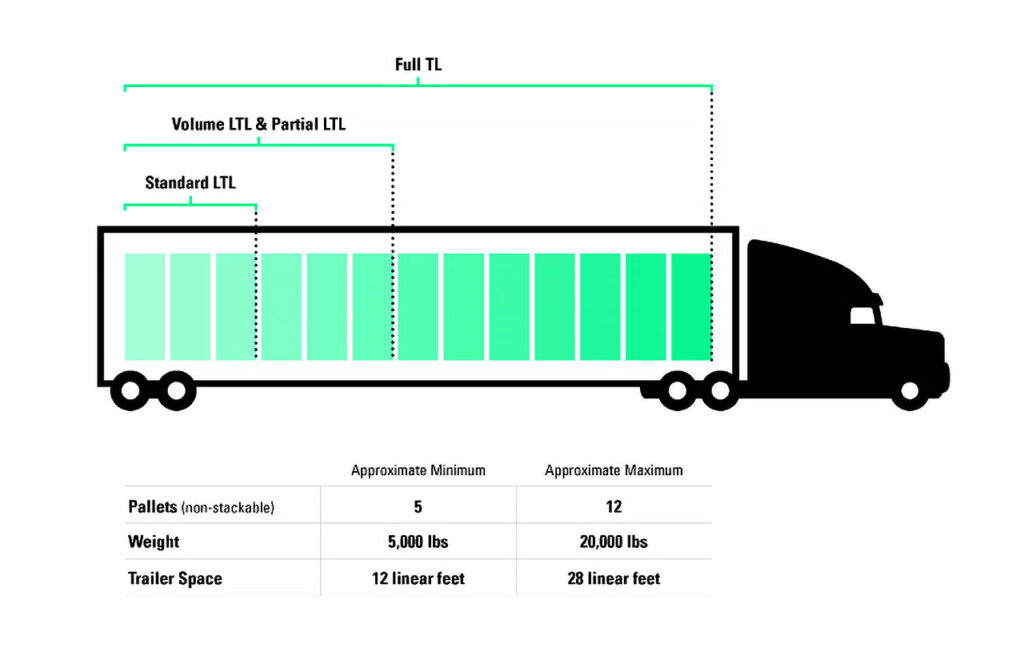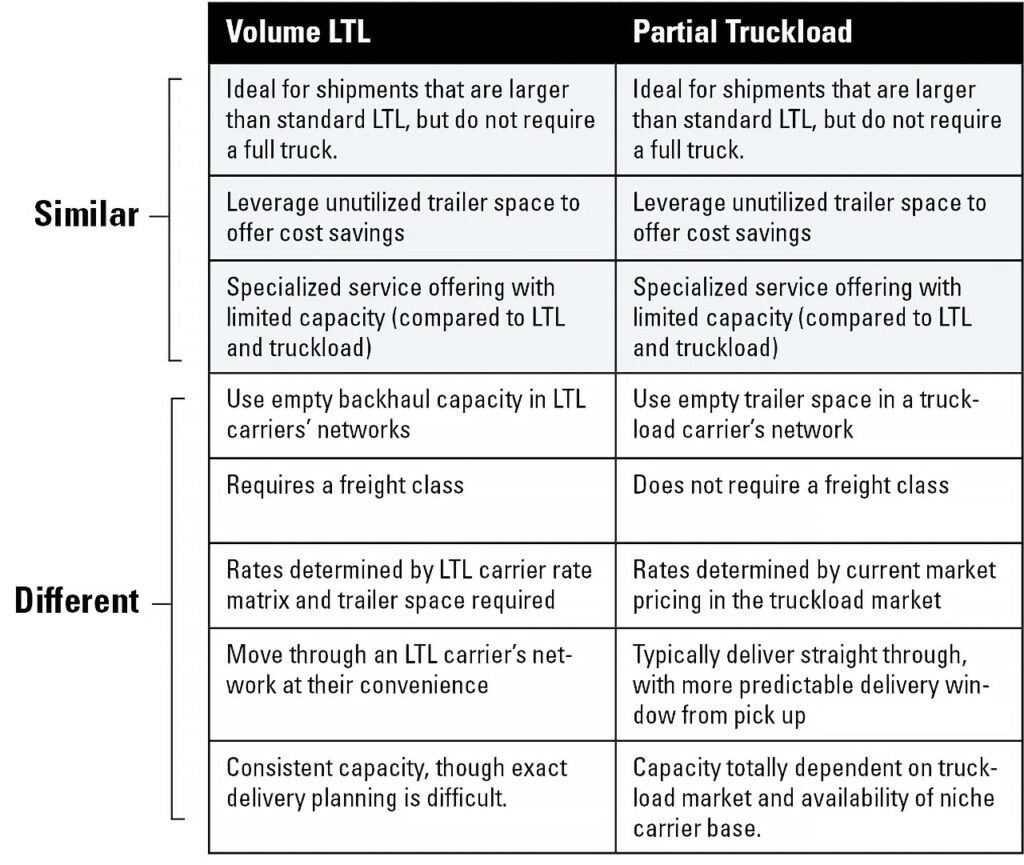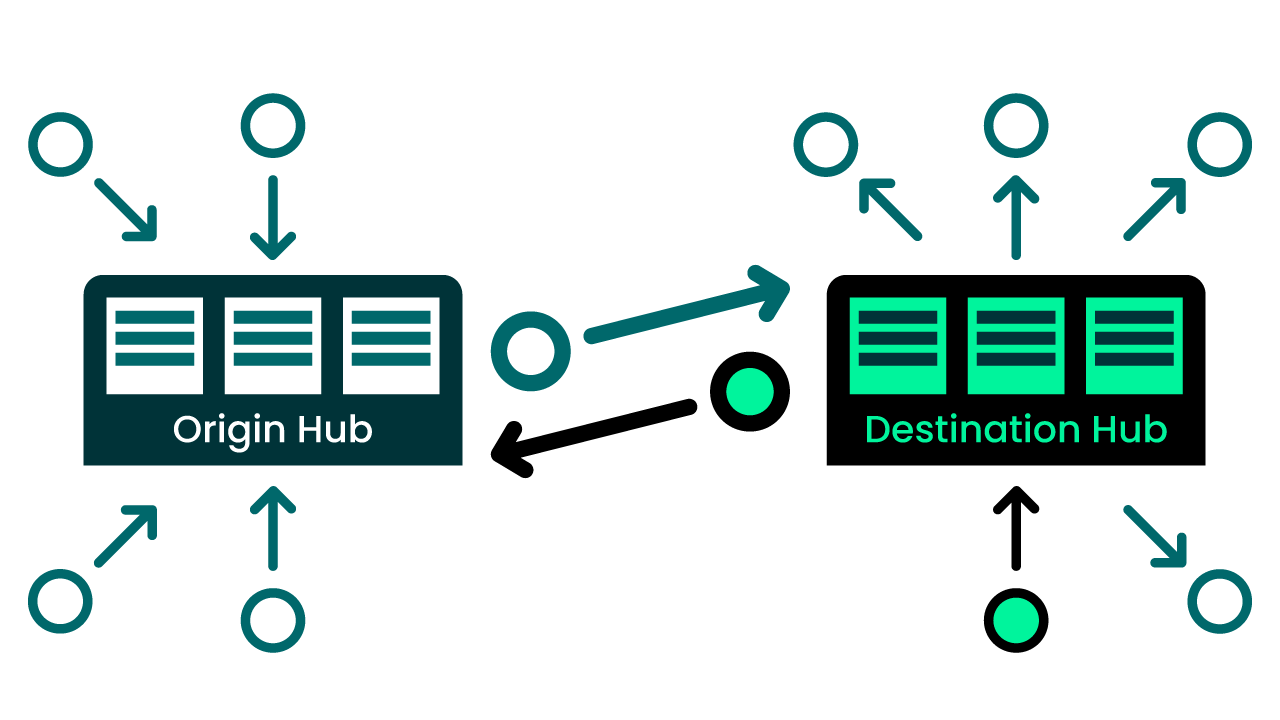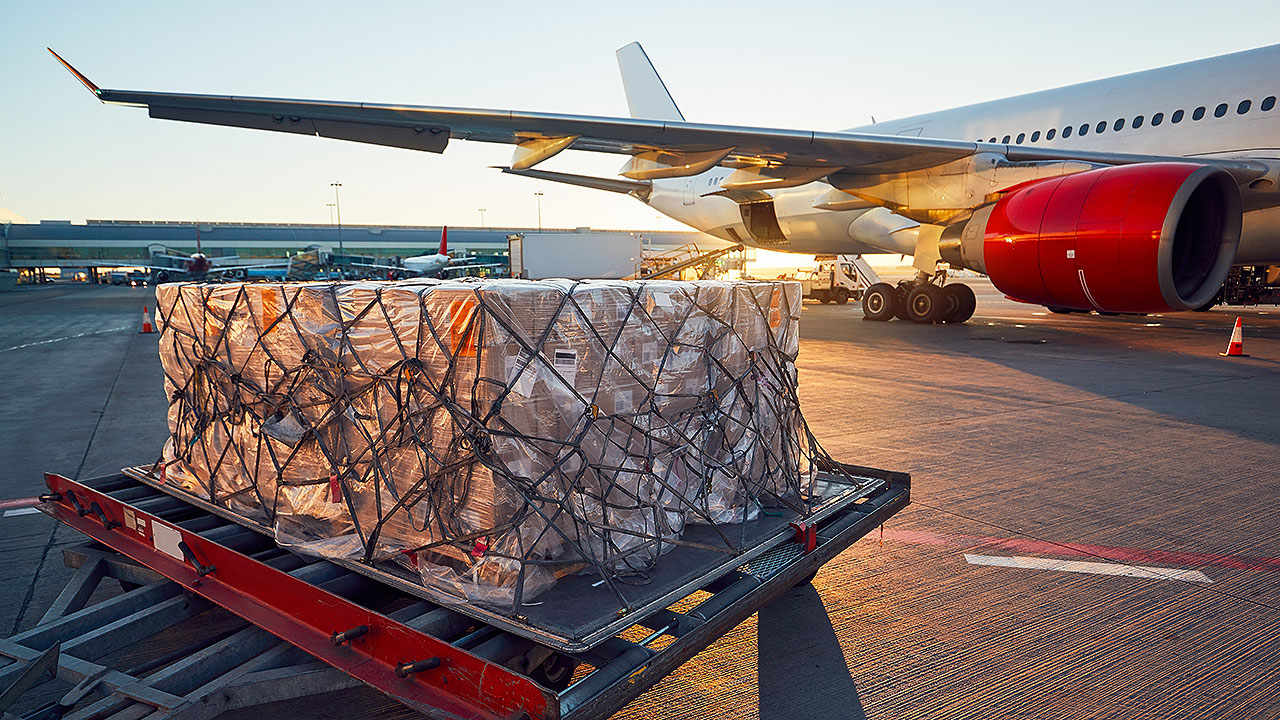You’re standing on the loading dock, staring at ten pallets of freight.
The door rolls up, and an empty 53’ trailer slowly backs into the bay.
The forklift operator quickly loads the ten pallets.
They look so small and lonely inside the cavernous van.
You shake your head and sigh, knowing you paid for 30 linear feet of trailer that will be shipping air — you could have used volume LTL to ship your freight.
Learn how to use this cost-saving mode in your supply chain:
- What volume LTL is and how it works
- Pros & cons of volume LTL
- When to use volume LTL
- The differences between volume LTL and partial/shared truckload
- How a 3PL can help you ship volume LTL
If you haven’t explored volume LTL, you could be paying too much for your larger LTL shipments.
What Is Volume LTL?
Volume LTL is a method of shipping that leverages under-utilized trailer space in a less than truckload (LTL) carrier’s network.
It’s ideal for shipments that have too many pallets for standard LTL shipping, but not quite enough to require a full truck.
How Does Volume LTL Work?

Most LTL carriers operate on a hub-and-spoke model, where a local driver will pick up several different shippers’ pallets and drop them off at a regional hub for sorting.
The carrier sorts and consolidates shipments based on destination, then transfers them from the origin hub to the destination hub.
A local driver will complete the final mile, making a series of multi-stop deliveries around the region.
LTL networks are large, dense and complex — carriers’ ability to offer competitive pricing depends on it.
While they strive to keep every truck fully loaded every time it’s on the road, the vast amount of moving parts creates empty capacity, no matter how efficient the network.
Carriers use volume LTL to fill in the gaps, reducing empty miles and generating a little extra cash flow.
Volume LTL uses excess trailer capacity in LTL carrier networks to move shipments of 6 to 12 pallets. It’s more cost effective, but may have less availability.
The Pros of Volume LTL: Benefits for Shippers
It’s Cheaper (Obviously)
Moving larger LTL shipments via volume LTL is usually less expensive than traditional LTL or full truckload. Why? Efficiency is the key to operating intricate LTL networks.
The larger shipments create somewhat of a logistical challenge — it can be difficult for carriers to predict exactly when they’ll have enough trailer space for 12 pallets.
Yet those larger shipments are perfect for empty backhauls, so carriers want to have access to them. In exchange for flexibility, LTL carriers offer lower rates.
It’s Safer
Volume LTL shipments often stay on the same trailer from pick-up to delivery.
Since freight is not usually handled as much as standard LTL during transit, it can reduce the likelihood of damaged product or freight claims.
It Adds Capacity
By leveraging LTL carriers’ empty backhauls, shippers are in effect tapping into a different capacity pool.
When both the truckload and LTL markets are experiencing tight capacity, volume LTL presents an interesting alternative.
It is an excellent supplement to a shipper’s LTL and truckload networks.
The Cons of Volume LTL: Things to Know Before Shipping
It Can Be Slower
As discussed above, precise planning for larger LTL shipments can be tricky.
Volume LTL shipments tend to move at the carrier’s convenience, based on their backhaul availability. If your shipment has a strict must-arrive-by date, volume LTL may not be a good option.
Lower Cargo Liability Limit
Typically, the liability limit for cargo loss or damage is no more than $1 per pound, compared to $5 to $25 for standard LTL.
When Should I Use Volume LTL? What Makes a Good Shipment
Though business-to-business (B2B) shipments are ideal, and commodities with lower cargo value that are either very high or very low in density fare the best, most commodities and freight classes are candidates for volume LTL shipping.
The most important factors are size and/or weight.
These are not hard-and-fast limits, but general guidelines:

Need help deciding if standard LTL, volume LTL, truckload or intermodal is right for you?
Review all the major freight shipping modes to determine the right one for your next shipment.
What Is the Difference Between Partial Truckload and Volume LTL?
Volume LTL and partial truckload (also called shared truckload or co-loading) are often lumped into the same category.
Though conceptually similar, there are a few key differences, chiefly, they tap into different carrier networks.
Volume LTL uses — you guessed it — LTL carrier networks, while the partial truckload uses full truckload carrier networks.
Partial truckload can offer compelling cost savings, but consistent capacity can be very difficult to coordinate.

Why Using a 3PL for Volume LTL Is a Good Idea
If you’re considering volume LTL, working with an experienced third party logistics company (3PL) is a great choice.
Let’s look back to the basic concept of volume LTL: Carriers are looking to fill empty backhaul capacity with shippers’ freight.
Filling that unmet need is literally the reason freight brokerages came into existence.
Since filling backhauls is not necessarily a core function of an LTL carrier, they turn to brokers — with their large and diverse customer portfolio — to source options. It expands their reach while simultaneously streamlining the process.
The same is true from a shipper perspective. Instead of establishing tariffs and maintaining relationships with multiple LTL carriers, they can rely on a broker to bring them all their options at once.
Brokers can simplify operations and cast a wider net, ensuring the most competitive LTL shipping rates and most available capacity.
For this more complex, niche service, working with an LTL broker is probably your best option.


